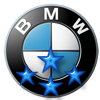pacorabat a écrit:Enfin quoiqu'il en soit, je ne suis pas très convaincu de l'efficacité du DTC pour s'extraire de situations embourbées... Les 2 fois où j'ai été légèrement bloqué (pourtant avec les pneus neiges), en DSC, DTC, ou tout OFF, ça n'a pas changé grand chose.
Tout à fait d'accord avec toi, aucun changement perceptible dans une situation difficile !





